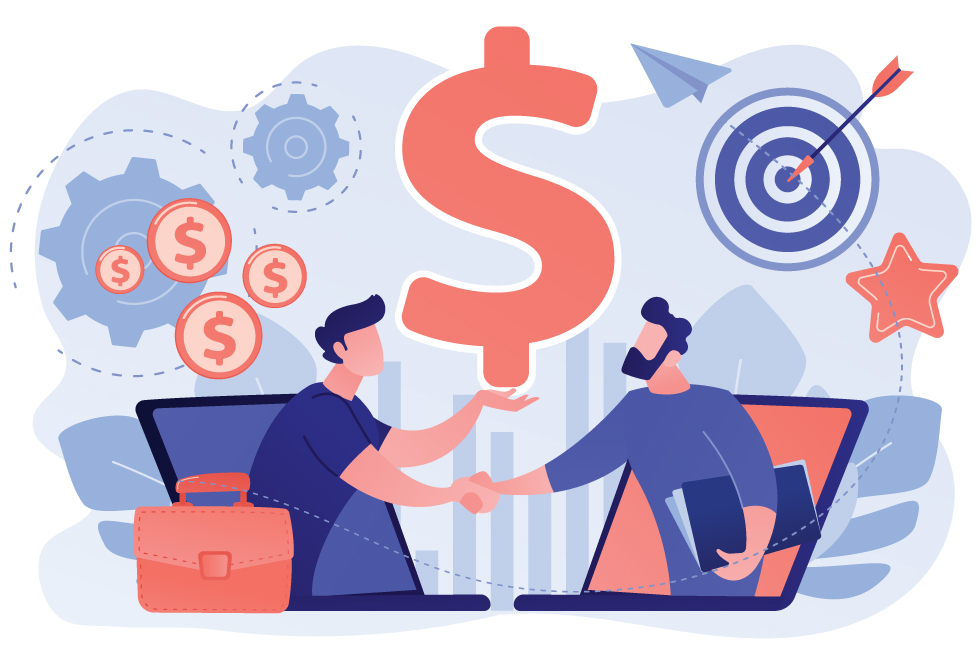Are you pricing your logo designs too low? Or too high? It can be hard to strike the right balance between “competitive” prices and rates that are too expensive for your target clients. If you price too low, though, you could end up getting LESS work — or, worse, being stuck on projects that effectively have you working for free. There’s no easy answer. But by asking yourself the right questions, you can ensure fair pricing for your clients AND fair compensation for your time and talent. Check out this post for a 3-step checklist to follow as you set your rates.

Whether you’re a freelance designer or looking for a full-time position at a design firm, you’ve probably wrestled with the question of how much to charge. If you’re creating a logo, it may not take much of your time. But add in multiple revisions and that could change.
Also, there’s the fact that your client will be using this to represent their brand. That makes a logo quite valuable — especially if the business is successful! So, what should you really charge for logo design services? Here are some pointers.

Think about your professional experience
As a general rule, the more experienced you are, the higher you should price your services. Clients expect higher costs from people with greater experience, so they tend to see higher as a sign of expertise. On the flip side, they expect to pay less for a less experienced person.
This means that if you price your services below what someone of your experience level would normally charge, you could be sending the wrong message. If you are an experienced designer, be sure that you’re charging market rates or above. Otherwise, you risk seeming like a novice or a “discount” designer.

Compete on value, not price
It’s tempting to charge lower prices so that you can get more business. This may work for some clients, but will ultimately hold you back. When you lower prices to attract clients who want a “better deal,” you may lose clients who want to “get what they pay for.” Remember, that works both ways: they often expect to get low-quality products for a low price, so those who want high-quality work may think that you can’t offer that if your rates are too low.
Learn the concept of perceived value: the more you charge, the higher people will estimate your worth. Charging more may price out some clients, but it will also attract clients who appreciate your skills!
Also, you often can’t compete with other designers on price alone. You have many competitors, so don’t make it a race to the bottom. Instead, focus on the value you offer. Then, set your prices accordingly. (Tip: compare your rates to those of similar experience levels serving similar clients.)
Keep your time and effort in mind
Your rates should always cover the cost of doing business. That includes your time and resources. You also want to add a profit margin. A good rule of thumb is to figure out your hourly rate. Then, estimate how many hours you need for a logo project.
This reduces your frustration and ensures that you don’t end up donating your time. Some projects may take more time and effort, and therefore you should charge more. If a client requests a simple logo that you know will only take you a couple of hours, multiply your hourly rate by 2 and add a profit margin.
But if the project will involve multiple meetings, multiple versions of the logo, complex design, etc., you can and should charge more. Otherwise, you’re likely setting yourself up for many hours of work that are effectively unpaid.

Wrapping Up
Designers and other creative people tend to undervalue themselves. And in such an oversaturated industry, it’s tempting to lower our prices to win the job. However, it’s important to remember that many clients are willing to pay more for higher-quality work. After all, their logo will be the face of their brand identity!
Set your prices at a level where you can (a) support yourself and (b) be fairly compensated for your time and talent. Look at the pricing for your competitors — and remember, those are the people who do similar work for similar clients, not every other designer in the world. Then, ask yourself if you should charge more or less depending on your skills the value you provide. Don’t be afraid to set higher prices for more complex, time-consuming projects.
When you strike a good pricing balance, you’ll find yourself attracting the clients who best suit your skillset. And you’ll be better able to grow your talents and experience. Good luck!







